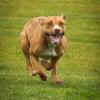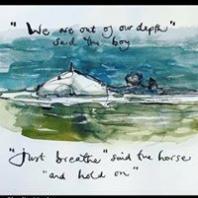-
Content Count
75 -
Joined
-
Last visited
About Beret
-
Rank
Member
Contact Methods
-
Website URL
http://www.bullyflop.com
Profile Information
-
Gender
Female
-
Location
Minneapolis
Recent Profile Visitors
2,440 profile views
-
Ditch the dremel and the idea of removing leather - Stick with practicing your tooling basics and go from there.
-
Ditto this. It's less an issue of the practice of reproducing graphics on leather as it is tooling fundamentals. It may behoove you to rework some fundamentals, watch a lot of videos, and get in a lot of practice on some simple starter patterns with more open angles/curves. There are quite a few aids and patterns out there particularly well-suited for practicing the basics.
-
Beret started following Will I get better leather if I order...., Carving graphics on leather, Awesome ;) and and 2 others
-
Picture of the carving?
-
Hahah sorry just came back today, thanks so much everyone!
-
Loads of junk mail aside, welcome to MN from over here in the Twin Cities
-
They're all tooled, yes. On the facebook page, I share photos of all the tooled panels before they're painted Really a lot of people also rivet. I trust Chicago screws more, and they do allow for the top panels to be removed for touch-ups, re-working, etc. Just a matter of personal preference. More expensive, though. Also, I recommend that people remove the top panel when conditioning the bases. Thank you! I stay busy
-
Finally!!! My links to embed photos kept breaking!
-
I've been busy! Selection of some of the latest custom collars to go out:
-
Well, bridle leather IS veg-tanned, but done differently. Through the tanning process, all those three types I named will be stuffed with oils, waxes, and dyes. I prefer them for primarily water resistance, durability, and resiliency.
-
Just my 2 cents based on my work in that market, so take it with a grain of salt: 1. I prefer to use 9/10oz+ (3.6+mm). 2. I would consider instead of dying veg-tan, using tack-quality latigo, bridle, or harness leathers. 3. See above. Best products depend on circumstances. What are you planning to do with them? Just plain leather belt-style collars? Stamping? Tooling? Other stuff? Please make sure you're using quality hardware, as well. The economy cheapo stuff really has no place on a dog collar, although many still use it. At the end of the day, you're making something made to contain a beloved predator with teeth and a typical, willful regard for their own safety. First and foremost, collars need to be strong and secure.
-
Angelus is an acrylic - You can just thin with water.
-

Will I get better leather if I order....
Beret replied to SouthernCross's topic in Leatherwork Conversation
Yes yes yes yes. I was sourcing from Zack White for some time, and just switched over to Hide House. Very pleased with their service, quality, and pricing. -
In general, the people who buy from me know and expect that these should be special-use pieces. They're expensive, they're not everyday collars you bum around with in the woods or at the dog park. I don't typically make a point of stating it directly to someone outright if not asked, as the people who pull the trigger do seem to have a good grasp of these just due to the materials and the price tag. I'm asked the question often though from prospective buyers and people with passing interest. I ended up making a handling & care FAQ on my website that I can just point people to, instead of re-explaining how leather, paint, and nice things in general need to be treated over and over again LOL. For reference, here's my collar care FAQ: http://www.bullyflop.com/chatter/2017/1/31/bullyflop-collar-care-101 FYI... Angelus is available on Amazon.ca
-
I use aerosol saddle-lac sprayed as-is, in a number of VERY light mistings instead of one or two heavier coats. That way I can keep the finish more even and matte and extend the longevity of the topcoat. I've found through experience that brushing on a resolene top coat really runs the risk of affecting my paint and antiquing, even after a lengthy and adequate dry time. I won't go that route anymore, even though I prefer the matte level of a resolene based finish.


